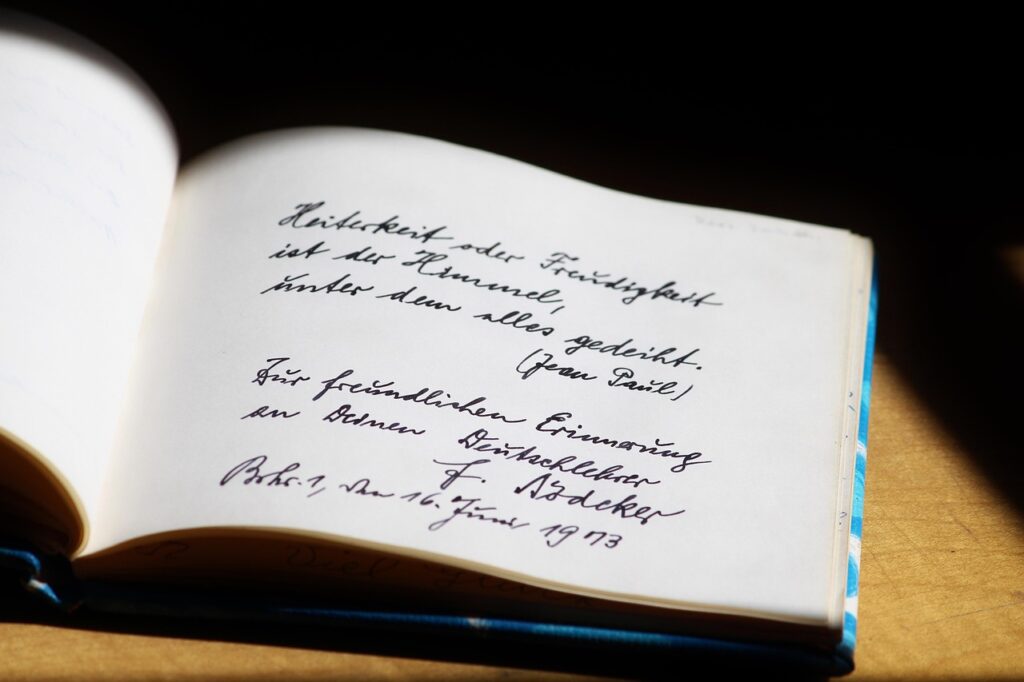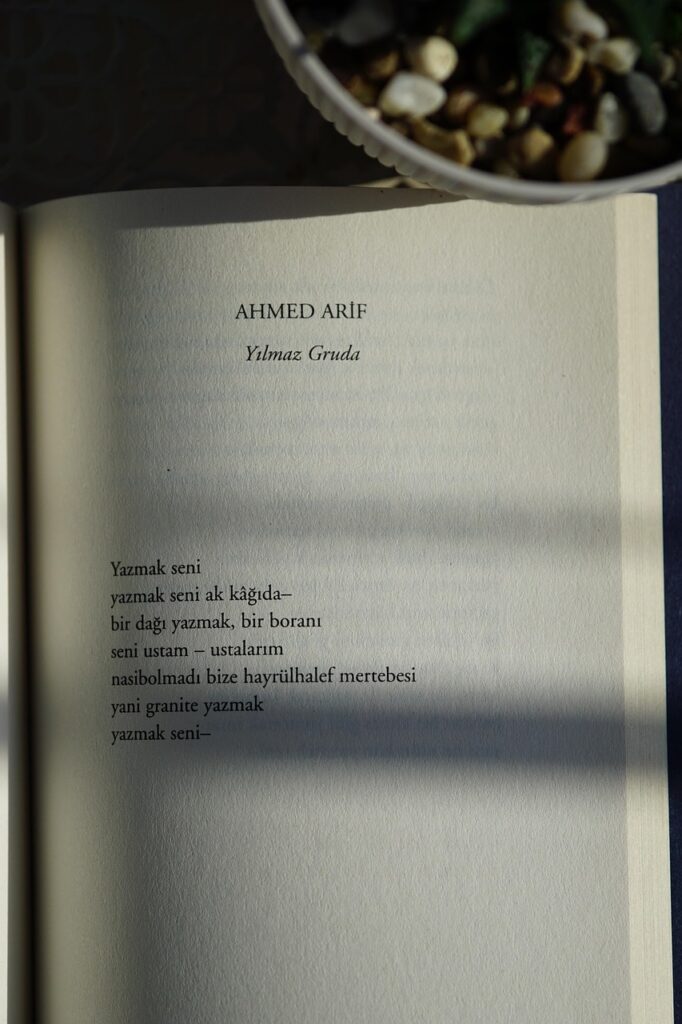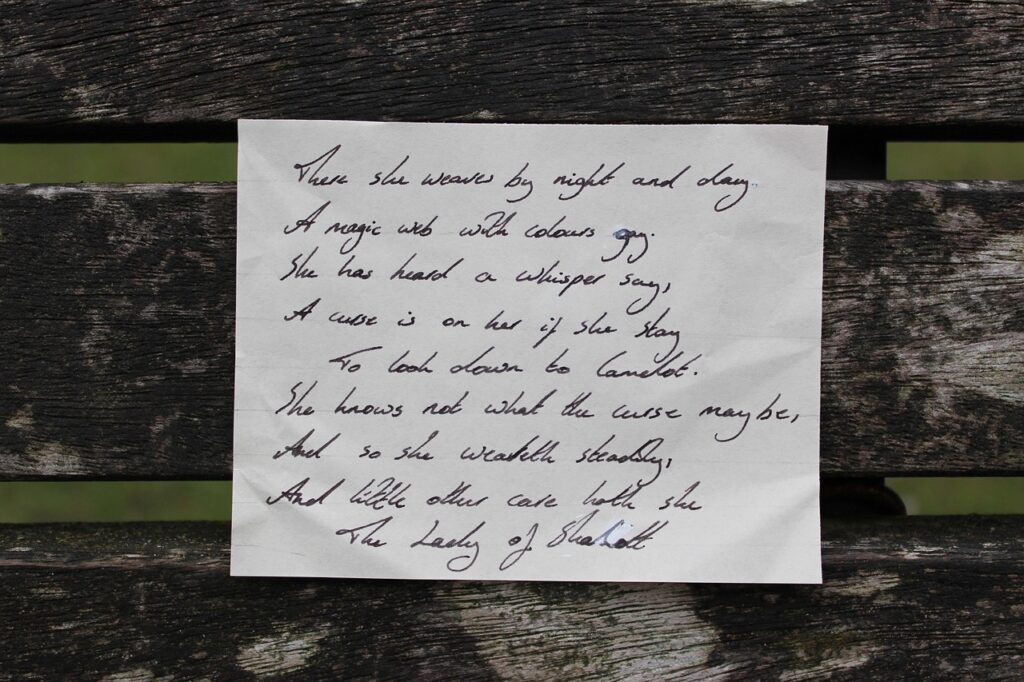
In a world that often feels increasingly complex, loud, and prone to cynicism, the introspective journey of figures like Matthew McConaughey offers a compelling counter-narrative. He articulates a profound truth: poetry and prayers emerge as a necessary ballast when one finds themselves veering “a little bit too cynical for my taste.” This sentiment resonates deeply, pointing to an innate human need for expression, reflection, and connection beyond the superficial. It suggests that delving into the raw, unfiltered rhythms of life – its highs, its lows, its embarrassing truths, and its sublime beauty – is not merely an artistic pursuit, but a vital practice for maintaining one’s equilibrium and discovering an authentic self.
McConaughey’s own path, from playing characters written and directed by others to embarking on the unfiltered creative act of writing his own stories, poems, and prayers, exemplifies this commitment. He challenges himself existentially, asking: “who are you in the documentary of your life, McConaughey?” This inquiry into one’s true narrative, stripped of external filters, mirrors the very essence of poetry itself. Poetry, in its purest form, seeks to distill complex emotions and experiences into resonant language, inviting both creator and audience to confront deeper truths and find meaning in the everyday.
Indeed, the beauty of poetry lies in its universal appeal, capable of moving newcomers and aficionados alike. It is a powerful conduit for expressing our deepest emotions, offering inspiration and solace across generations. As we navigate our own lives, seeking to shed the layers of external expectation and societal cynicism, these timeless verses serve as beacons, illuminating the enduring themes that shape the human condition and encouraging us to find our own “song” amidst life’s often chaotic melody. Through this exploration, we can learn to embrace the full spectrum of our experiences, much like McConaughey learned to turn guilt and shame into giggles, recognizing them as integral parts of life’s rhythmic dance.
1. **“Sonnet 18” by William Shakespeare**Naturally, any comprehensive discussion of influential poetry must begin with the Bard himself, William Shakespeare. Among his vast and revered oeuvre, “Sonnet 18” stands out as not just one of the most famous poems ever written, but also as one of his most exquisitely beautiful and iconic love poems. It encapsulates a profound expression of deep affection, transcending the superficiality often associated with romantic verse to reach a level of enduring admiration.
This sonnet offers a powerful alternative to the more ephemeral or clichéd declarations of love, suggesting a depth of feeling that is both rare and aspirational. When one seeks to articulate an intense and unwavering devotion, bypassing the transient and the trite, Shakespeare’s eloquent lines provide a masterclass in poetic sincerity. Its timeless appeal lies in its ability to elevate personal emotion to a universal sentiment, making it a touchstone for lovers and literary enthusiasts across centuries.
In its meticulous construction and lyrical flow, “Sonnet 18” argues for the immortality of beauty and love through art. The speaker’s beloved is depicted as more temperate and constant than a summer’s day, whose beauty is subject to nature’s changing course. Through the “eternal lines to time” of the poem itself, the beloved’s fair essence is preserved, ensuring that “So long lives this, and this gives life to thee.” This testament to poetry’s power to immortalize emotion aligns perfectly with the idea of finding an enduring song in life, a narrative that withstands the passage of time and the erosion of cynicism.

2. **“Because I Could Not Stop for Death” by Emily Dickinson**Published posthumously in 1890, Emily Dickinson’s “Because I Could Not Stop for Death” has arguably cemented its place as one of her most celebrated and famous poems. This work masterfully navigates the profound and often daunting subject of mortality, offering a perspective that is both unique and deeply comforting. Dickinson personifies Death not as a menacing figure, but rather as a “kindly” driver, courteously halting his carriage to transport the speaker to eternity.
This portrayal subverts traditional expectations of death, transforming a feared transition into a civil, almost serene journey. The poem’s narrative takes the reader through various stages of life, passing by scenes of childhood, labor, and nature, before arriving at the metaphorical “House that seemed a Swelling of the Ground.” The journey emphasizes a gradual detachment from earthly concerns, framed by Death’s lack of haste and the speaker’s quiet acceptance.
Like many funeral poems designed to offer solace, Dickinson’s piece suggests a continuity of existence, particularly within its poignant final stanza. The speaker’s perception that centuries feel “shorter than the Day” since the initial encounter with Death implies an ongoing life in the afterlife, a realm where earthly time loses its dominion. This exploration of the unknown, imbued with a sense of peace rather than dread, provides a powerful reflection on the cycle of life and death, inviting a nuanced understanding of our ultimate destination, and perhaps, tempering the cynicism surrounding finality.

3. **“She Walks in Beauty” by Lord Byron**Lord Byron, known as George Gordon, stands as an iconic figure of the early 19th-century Romantic Movement, as celebrated for his tumultuous personal life as for his famous poetry. His works often delve into themes of intense emotion, natural beauty, and the complexities of human relationships, earning him a lasting place in the literary canon. “She Walks in Beauty” exemplifies his ability to craft lines of unparalleled romance and admiration, making it a timeless choice for expressing affection.
This particular poem is a quintessential love poem dedicated to a woman, praising not only her outward physical attributes but also, more profoundly, her inner grace and purity. Byron meticulously details how the “dark and bright” aspects of night coalesce in her appearance, suggesting a perfect balance that “heaven to gaudy day denies.” This delicate equilibrium highlights a beauty that is both striking and subtle, demonstrating a nuanced appreciation for intrinsic qualities over superficial glamour.
The poem further elaborates on the interplay between her physical charm and her virtuous spirit, noting how her serenely sweet thoughts are expressed in her calm demeanor. It concludes by affirming that her smiles and glowing tints reflect “days in goodness spent,” revealing “A mind at peace with all below, / A heart whose love is innocent!” This holistic appreciation of beauty, where inner virtue enhances outer appearance, speaks to a deeper understanding of human character, reminding us that true allure stems from a harmonious blend of self, a concept that aligns with McConaughey’s emphasis on living authentically and without filter.

4. **“O Captain! My Captain!” by Walt Whitman**Walt Whitman’s “O Captain! My Captain!” holds a distinctive place in American literature, instantly recognizable to many, especially fans of the 1989 film *Dead Poets Society*. Beyond its cinematic recognition, the poem powerfully stands on its own merits, deserving its spot among the most famous poems ever written. Penned in 1865, it emerged as a heartfelt tribute to Abraham Lincoln following his assassination, transforming a national tragedy into a poignant poetic lament.
This ode masterfully employs the metaphor of a ship returning from a perilous journey, its crew exulting in victory, only for the captain to lie “fallen cold and dead” on its deck. Whitman captures the paradox of triumph overshadowed by profound loss, echoing the nation’s grief after the Civil War. The repeated cries of “O Captain! My Captain!” convey an immense sorrow and disbelief, painting a vivid picture of a country mourning its fallen leader at the very moment of success.
The poem’s enduring power lies in its universal themes of bravery, sacrifice, and untimely death. It continues to inspire readers centuries later, serving as a solemn reminder of the costs of leadership and conflict. Whitman’s ability to encapsulate such complex emotions within a vivid narrative underscores poetry’s capacity to process collective sorrow and honor significant historical moments, offering a shared space for reflection that can counteract the cynical dismissal of heroism and sacrifice, urging us to remember and feel deeply.

5. **“The Road Not Taken” by Robert Frost**Robert Frost’s “The Road Not Taken” is, at first glance, a deceptively simple yet beautiful account of a walk in the woods. Its pastoral setting and accessible language draw readers in, but beneath the surface of its tranquil imagery lies a profound philosophical lesson. The poem centers on the metaphor of a fork in the road, presenting a choice that symbolizes the significant decisions individuals face throughout their lives, often with far-reaching consequences.
Delving deeper, the poem teaches a powerful lesson about the importance of singularity and distinct personality. Frost suggests that instead of passively following the well-worn path chosen by countless others, there is a transformative power in forging ahead on “the one less traveled by.” This act of choosing an unconventional route is portrayed not as an act of rebellion, but as an assertion of individuality, a commitment to one’s unique trajectory.
The iconic final lines, “I took the one less traveled by, / And that has made all the difference,” resonate deeply with anyone who has faced a defining moment of choice. It champions the courage to deviate from the norm and carve out one’s own destiny, implying that such decisions fundamentally shape our experiences and identity. In a world that often pressures conformity, Frost’s poem serves as an enduring inspiration to embrace personal agency and the belief that intentional choices, like McConaughey’s deliberate preparations, are what truly define a life well-lived.

6. **“Dreams” by Langston Hughes**Langston Hughes stands as a significant and profoundly influential voice in American poetry, widely recognized as one of the 20th century’s most prominent Black poets and a leading figure of the Harlem Renaissance. His work often explored themes of hope, identity, and the African American experience with a lyrical elegance and striking directness. In his short yet immensely powerful poem, “Dreams,” Hughes distills a fundamental truth about human existence.
The poem serves as an urgent and passionate plea to his readers: “Hold fast to dreams.” Hughes posits that dreams are not mere luxuries or fleeting fantasies, but rather essential components of a meaningful life. He uses vivid and poignant metaphors to illustrate this crucial point, emphasizing the fragility of life when divested of aspiration and purpose. Without dreams, he contends, life loses its vital spark and direction.
“For if dreams die,” Hughes writes, “Life is a broken-winged bird / That cannot fly.” This imagery evokes a sense of profound incapacity and stagnation, highlighting the crippling effect of losing one’s hopes. Similarly, “For when dreams go, / Life is a barren field / Frozen with snow.” This further reinforces the desolate and unproductive state of a life devoid of dreams. Hughes’s poem, therefore, is not merely inspirational; it’s a foundational statement on the necessity of cultivating and protecting our inner visions, aligning with the conviction that purpose and aspiration are crucial antidotes to the creeping tendrils of cynicism.

7. **“Happy Thought” by Robert Louis Stevenson**In stark contrast to the epic scope or profound philosophical inquiries of some other poems, Robert Louis Stevenson’s “Happy Thought” offers a lesson in brevity and potent simplicity. The author of the classic novel *Treasure Island*, Stevenson demonstrates in just two lines the profound impact that a concise message can have on one’s perspective. It’s a remarkable example of how profound wisdom can be encapsulated in the most unassuming forms.
The poem, asserting “The world is so full of a number of things / I’m sure we should all be as happy as kings,” serves as an immediate and gentle reminder of gratitude. It encourages readers, particularly when feeling “down about the state of the world,” to shift their focus towards the abundance of blessings and simple joys that often go unnoticed in the rush of daily life. This sentiment is a powerful antidote to pervasive negativity or cynicism.
Stevenson’s timeless lines advocate for a mindset of appreciation, suggesting that happiness is readily available if we simply choose to acknowledge the richness of our surroundings. It’s a call to observe and value the myriad positive aspects of existence, urging us to find contentment in the present moment rather than succumbing to despair. This ‘happy thought’ is a small but mighty tool for cultivating positivity and reminding us that, despite challenges, there is always a bounty of good to be found, reinforcing the idea of finding joy in life’s unfiltered, often overlooked, rhythms.

8. **“The Raven” by Edgar Allan Poe**Edgar Allan Poe’s “The Raven,” an iconic work in the realm of American poetry, immediately immerses the reader in a famously dark and intricate narrative. This poem vividly portrays a man’s harrowing struggle with profound grief, ultimately detailing his unsettling descent into madness. Poe masterfully employs intricate symbolism and his signature Gothic horror themes to create an atmosphere thick with despair and psychological torment.
The opening lines, so often quoted, merely set the stage for an 18-stanza journey through despair and longing, underscored by Poe’s characteristic eerie undertones. The repetitive, haunting refrain of “Nevermore” from the titular raven drives home the inescapability of sorrow and the futility of seeking solace from an indifferent universe. This isn’t a comforting narrative designed to assuage sorrow; instead, it is a haunting meditation on the relentless grip of love and loss.
In the context of navigating life’s unpredictable currents and finding an antidote to cynicism, “The Raven” offers a stark cautionary tale. It profoundly illustrates the destructive potential of unchecked emotions—grief and despair—when allowed to consume the individual. Much like McConaughey’s own journey of confronting and ultimately transforming guilt and shame into understanding, Poe’s work highlights the inner struggles and existential quandaries that one must confront, albeit on a far more intense and tragic scale, to maintain equilibrium.
For McConaughey, the process of writing his own poems and prayers was a deliberate act to “get rid of the filters,” to confront his “unfiltered creative act.” “The Raven,” in its raw depiction of a mind unravelling, demonstrates the profound need for such an internal reckoning. It underscores that without a conscious effort to process deep emotional pain, one risks succumbing to a consuming darkness, making the search for meaning and authentic self-expression all the more urgent.
9. **“How Do I Love Thee?” by Elizabeth Barrett Browning**Elizabeth Barrett Browning’s “How Do I Love Thee?” stands as a testament to the enduring power of romantic verse, unequivocally earning its place among the most celebrated expressions of affection. It is no surprise that many of the most famous poems ever written delve into the complexities of love, embracing both its intoxicating joys and its inevitable heartbreaks. This particular sonnet, however, rises above mere sentimentality, offering a profound and multi-faceted declaration of devotion.
The poem meticulously details a love so pure, so expansive, and so unyielding that it transcends the conventional boundaries of time and even death. Browning articulates a devotion that permeates every aspect of existence, from “the depth and breadth and height / My soul can reach” to “the level of every day’s / Most quiet need.” It is a love freely given, purely felt, and sustained by a passion that draws from both past griefs and childhood faith.
This powerful articulation of an unwavering, eternal love offers a striking contrast to a world often prone to cynical views of relationships and human connection. Browning’s lines present an aspirational ideal, a depth of bond that remains firm in the face of life’s transient nature and extends “better after death.” Such an enduring sentiment aligns perfectly with McConaughey’s search for lasting truths and meaningful connections as an antidote to cynicism, urging a belief in commitments that withstand the test of time.
In a broader sense, this poem echoes the desire for profound connection that drives many to seek solace and meaning in art and introspection. It suggests that just as one can cultivate a love that expands beyond immediate perception, individuals can also foster an inner life that is rich, deep, and resilient, capable of countering the superficiality that often breeds disillusionment. It’s about building something that lasts, a core tenet in McConaughey’s intentional approach to life.

10. **“I’m Nobody! Who Are You?” by Emily Dickinson**Emily Dickinson, a towering figure in American poetry, consistently challenged conventional notions, and her famous poem, “I’m Nobody! Who Are You?”, is a brilliant exploration of anonymity and humility. In this deceptively simple yet profound work, Dickinson celebrates the quiet grace of being unknown, presenting it as a liberating alternative to the relentless pursuit of public recognition.
The poem playfully posits that it is “How dreary to be somebody!” contrasting the public persona with the serene state of being “nobody.” Dickinson likens the public figure to a “frog / To tell your name the livelong day / To an admiring bog!”, vividly illustrating the draining effort required to maintain a constant need for external validation.
In today’s modern world, where social media often equates self-worth with visibility and where everyone seemingly has the opportunity to be “somebody,” Dickinson’s verses hold even greater significance. Her work serves as a powerful counter-narrative, advocating for the intrinsic value of an authentic, private self over a constantly curated public image. It champions the freedom found in not having to perform for an “admiring bog.”
This theme deeply resonates with Matthew McConaughey’s own existential challenge: “who are you in the documentary of your life, McConaughey?” He describes his journey of “getting rid of the filters” as he shifted from playing characters to writing his own story. Dickinson’s poem provides a poetic parallel to this quest for an unfiltered self, suggesting that true identity and contentment are found not in public acclamation, but in the quiet confidence of knowing oneself, free from the “dreary” expectations of external validation.

11. **“The Wasteland” by T.S. Eliot**T.S. Eliot’s “The Wasteland” is widely recognized as arguably the most significant 20th-century work of poetry, a monumental achievement that offers a bleak yet intensely analytical exploration of modern life. This extensive poem, totaling 434 lines across multiple sections, transcends conventional narrative, shifting through various locations, speakers, and temporal settings to create a fragmented yet cohesive portrayal of a post-World War I era steeped in profound dread and disillusionment.
The poem opens with the stark declaration, “April is the cruellest month,” immediately setting a tone of inverted hope, where the traditional signs of renewal are instead harbingers of pain. Eliot masterfully weaves together literary allusions, fragmented voices, and cultural critiques to depict a world experiencing spiritual and moral decay. It’s a work that demands intellectual rigor, refusing easy answers and instead inviting readers to grapple with the complexities of existence in a shattered age.
“The Wasteland” encapsulates the existential quandaries of a society grappling with profound loss, the aftermath of industrialization, and a pervasive sense of meaninglessness. It explores the destructive potential of unchecked societal malaise and the spiritual barrenness that can arise from collective trauma. This work represents a cultural cynicism so vast that it underscores the very reason figures like Matthew McConaughey seek to actively counteract such despair with their own “poems and and prayers.”
In challenging himself to look beyond mere performance and engage in unfiltered self-creation, McConaughey seeks to find “something good to share that I think we could all use.” Eliot’s masterpiece, while not offering easy comfort, illuminates the profound need for such endeavors. It reveals the depths of desolation that can engulf humanity, making the search for unity, preparation, and self-awareness—as emphasized by McConaughey—not merely a personal pursuit, but a vital societal imperative against encroaching meaninglessness.
12. **“Jabberwocky” by Lewis Carroll**Lewis Carroll’s “Jabberwocky,” nestled within his imaginative masterpiece *Through the Looking-Glass*, stands as a unique and wonderfully whimsical contribution to poetry. For those familiar with Carroll primarily through *Alice’s Adventures in Wonderland*, this poem showcases an even deeper dive into linguistic play and inventive absurdity. It’s a brilliant example of how language can be stretched and reshaped to create entirely new realms of meaning and delight.
The poem is famously characterized by its abundance of made-up words, inviting readers into a world where “the slithy toves / Did gyre and gimble in the wabe.” While initially perplexing, many of these neologisms were later explained within the novel, adding layers of cleverness to Carroll’s creation. Notably, one of these invented words, “chortle,” even transcended its fictional origins to become a permanent fixture in the American lexicon, a testament to the poem’s influential charm.
Beyond its humorous and fantastical elements, “Jabberwocky” subtly reinforces the power of language to shape perception and create meaning, even from the seemingly nonsensical. It invites an open-mindedness and a willingness to engage with the unconventional, much like McConaughey’s journey into writing his own “unfiltered” stories and poems. This embrace of creativity and the playful construction of reality can be a subtle but potent antidote to rigid, cynical thinking.
McConaughey speaks of finding “a song” even when “lost and wobbly,” transforming guilt into giggles, and seeing the “rhythms of life” in everything. “Jabberwocky,” with its imaginative spirit and ability to elicit smiles through its sheer inventiveness, offers a parallel. It reminds us that there is joy and profound insight to be found in the unexpected, in the act of playing with ideas and expressions, allowing for humor and lightness to coexist with deeper explorations of life.

13. **“I Have a Rendezvous with Death” by Alan Seeger**Alan Seeger’s poignant poem, “I Have a Rendezvous with Death,” offers a deeply personal yet universally resonant exploration of mortality and sacrifice, made even more tragic by the circumstances of its author’s untimely death during World War I. Published in 1917, the poem is a powerful testament to the confrontation with one’s own end, a theme that speaks directly to the unpredictable currents of life and the ultimate human destination.
Seeger’s verses articulate a serene, almost fatalistic acceptance of death as a pre-ordained appointment. He repeatedly evokes this “rendezvous,” describing it as an unavoidable encounter “At some disputed barricade” when Spring arrives. This portrayal transforms the abstract fear of dying into a concrete, destined event, illustrating a profound act of resignation and courage in the face of an inevitable end, especially for soldiers on the front lines.
The poem stands as a moving reflection on the emotional landscape of war, capturing the blend of duty, fear, and ultimate acceptance. It highlights how confronting such stark realities through art and poetry can be a transformative process, allowing individuals to process immense grief and prepare for profound loss. It’s a reminder that embracing the full spectrum of human experience, including our vulnerabilities and our mortality, is essential for a complete understanding of life.
This introspective grappling with destiny and self-sacrifice aligns powerfully with McConaughey’s philosophy of preparedness and intentional living. He states, “I don’t like the feeling of not being prepared for a role or for my marriage or for fatherhood,” seeking a “baseline of trying to be prepared for most things.” Seeger’s poem, though dealing with a far more absolute preparation, underscores the value of confronting fundamental truths and being true to one’s “pledged word,” even when that word is a solemn appointment with destiny.

14. **“Fire and Ice” by Robert Frost**Robert Frost’s “Fire and Ice” is a marvel of poetic conciseness, managing to encapsulate a profound philosophical observation about human nature and the potential for destruction within a mere nine lines. This simple yet deeply symbolic poem delves into the timeless question of how the world might end, positing two powerful forces: fire and ice, which Frost masterfully links to primal human emotions.
In this stark contemplation, fire is presented as a metaphor for desire, a passionate and consuming force, while ice symbolizes hatred, a cold and pervasive destructive power. Frost’s brief but impactful lines suggest that both these intense emotions, if left untamed and allowed to reach their extremities, possess the capacity to bring about ultimate ruin. It is a striking commentary on the internal forces that can shape—or shatter—our collective fate.
The poem serves as a powerful call for self-awareness and moderation, urging individuals to recognize and manage the potent impulses that reside within. It implies that understanding the destructive potential of unchecked desire and hatred is crucial for navigating life, both individually and as a society. This lesson in emotional control and foresight is a profound counterpoint to the impulsivity and emotional extremes that can often fuel cynicism and division.
This insight resonates deeply with Matthew McConaughey’s emphasis on intentionality and personal agency. His assertion, “I prepare so I can play,” speaks to a deliberate effort to understand the “playbook” of life, anticipating challenges and making conscious choices. Frost’s poem reinforces the importance of such preparation, not just for personal success, but for preventing the broader “hard stuff” that arises from untamed emotions. It’s a call to keep “hands on the wheel” of one’s inner life, much like McConaughey advocates for in his own approach to faith and self-reliance.
As we traverse this rich landscape of poetic thought, from Shakespeare’s eternal love to Frost’s warning against extremity, it becomes abundantly clear why Matthew McConaughey found poetry and prayers to be a necessary anchor against cynicism. Each of these timeless works, in its own unique way, invites us to pause, reflect, and confront the unfiltered realities of our existence—be they grand passions, quiet identities, collective griefs, or the very forces that threaten to dismantle our world. They are not just words on a page; they are conduits for deeper understanding, offering solace, challenging perspectives, and urging us toward a more intentional, self-aware, and ultimately, more hopeful way of living. In the rhythms and truths captured by these poets, and echoed in McConaughey’s own journey, we find the enduring song that helps us navigate life’s complex melody, reminding us to keep our “hands on the wheel” and to always search for that “something good to share” that transcends the cynical noise.






